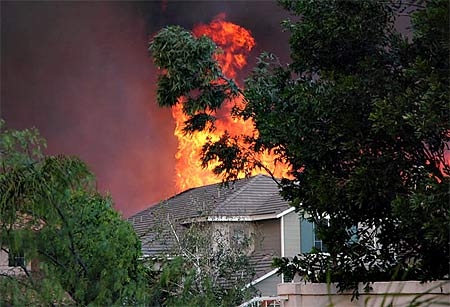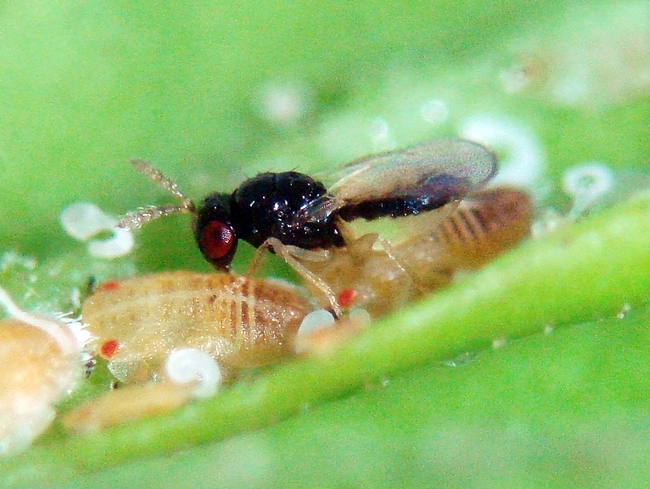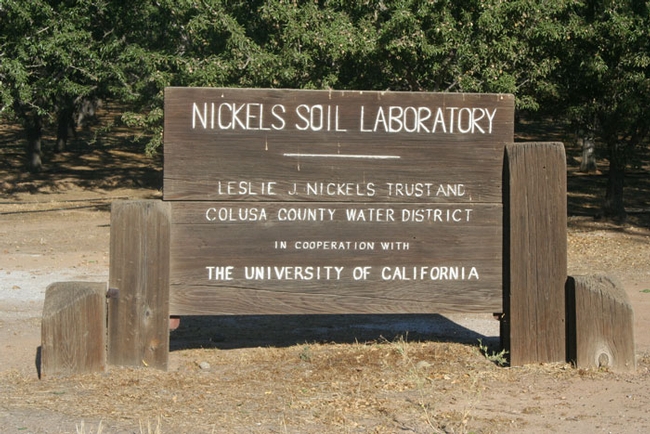From the UC Blogosphere...
Growth in wildland areas makes firefighting more costly
Building homes close to wildland areas in the rural West is driving up the cost of fighting wildfires, reported Raju Chebium in USA Today. In California, entire "stealth cities" have sprung up in the mountains — and thousands of people risk losing their homes when wildfires strike, said a UC Cooperative Extension specialist.
In uninhabited areas, authorities can let wildfire run their course. But that's not an option when homes are threatened, said Thomas Scott, UC Cooperative Extension specialist in the Department of Ecosystem Sciences at UC Riverside. Scott also serves at UC Berkeley in the Department of Environmental Science, Policy and Management.
"The reality is that if you are trying to rescue people's lives or trying to save people's houses, you end up spending an awful amount of money," he said.
The number of wilderness communities rose during the 1987 and 1997 housing booms, Scott said. Development slowed during the recent recession, but is showing signs of heating up again. Scott urges local officials to do a better job of directing growth adjacent to wild areas.
Homes in wilderness communities sometimes "can't be saved in a large conflagration," Scott said. "The question then becomes, can you expect society to underwrite your desire to live in a chaparral?"
Additional fire coverage with UC Agriculture and Natural Resources experts:
Nearly 10,000 acres burned in Southern California Wildfires
KQED Radio, Forum with Michael Krasny
Host Dave Iverson interviewed Bill Stewart, UC Cooperative Extension specialist in the Department of Environmental Science, Policy and Management at UC Berkeley. Stewart is co-director of the Center for Fire Research and Outreach at UC Berkeley.
Some evacuations lifted in San Diego fire area
Julie Watson and Elliot Spagat
For this story, Gillian Flaccus interviewed Max Moritz, UC Cooperative Extension specialist in the Department of Environmental Science, Policy and Management at UC Berkeley, and Jan Gonzales, coordinator of the Wldfire Zone website, for this story.
Pollen Power
Female Valley carpenter bees are solid black--except when they're foraging around passion flowers. Then they're black and...
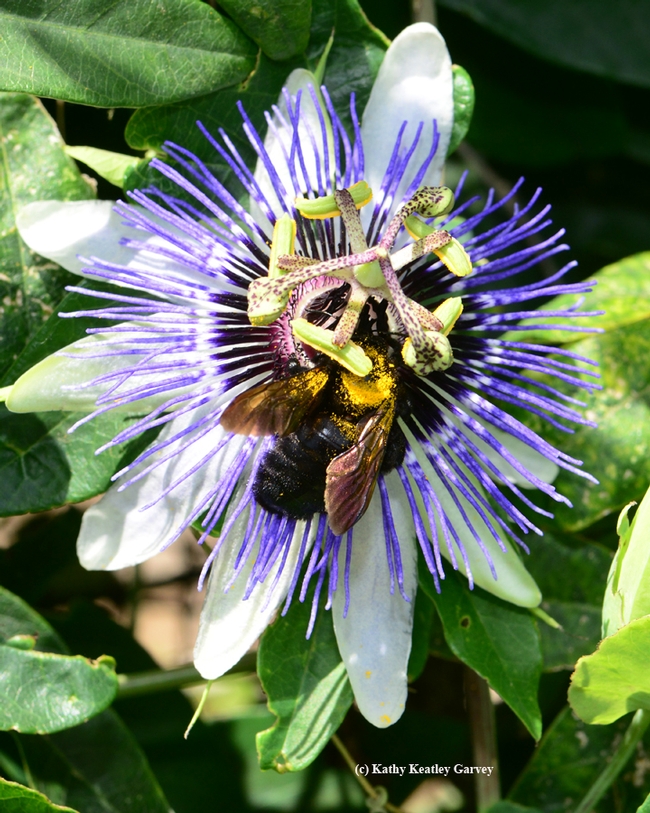
A Valley carpenter bee receives a brush of pollen. (Photo by Kathy Keatley Garvey)
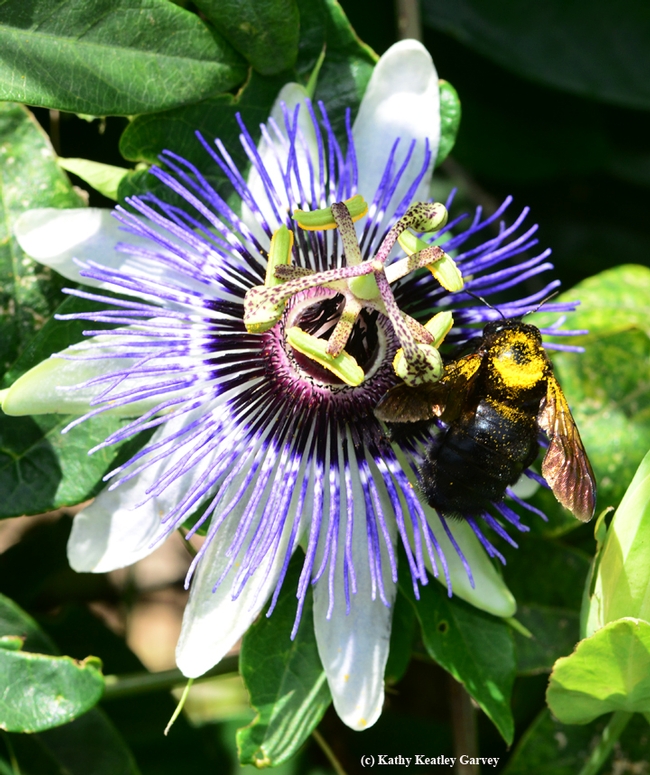
Check out the yellow pollen on this Valley carpenter bee's thorax. (Photo by Kathy Keatley Garvey)
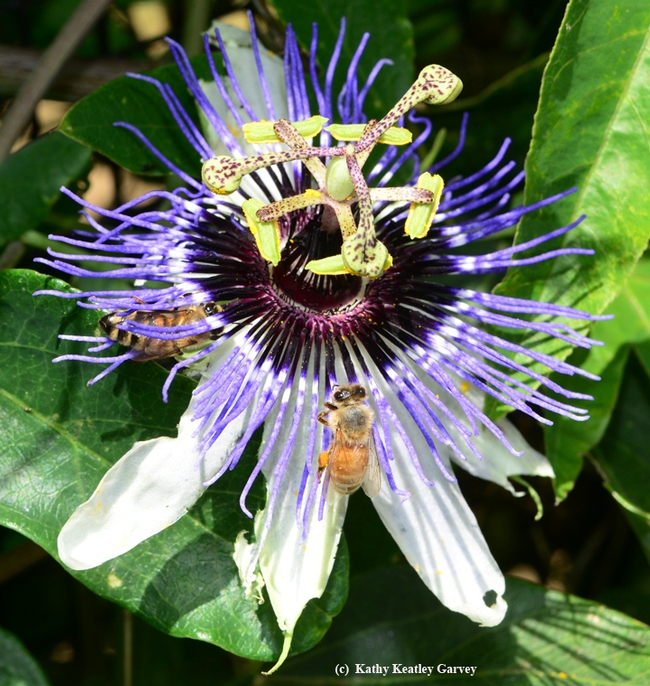
Honey bees frequent the passion flowers, too. (Photo by Kathy Keatley Garvey)
More wasps being released to control Asian citrus psyllid
Releases of tiny wasps to search out and destroy Asian citrus psyllid in residential areas of Southern California are ramping up significantly, reported Ricardo Lopez in the Los Angeles Times.
Yesterday, the Farm Bureau of Ventura County hosted a meeting where the California Citrus Pest and Disease Prevention Committee updated the community on efforts to control the devastating citrus pest. In addition to the residential releases of the imported natural enemy of ACP – known as Tamarixia radiata – the state is also preparing to invite organic commercial producers to request releases in their groves.
“We have referred one grower in the Bardsdale area, where an ACP population unfortunately appears to have become well established,” said John Krist, chief executive officer of the Farm Bureau of Ventura County.
The research effort is led by Mark Hoddle, UC Cooperative Extension specialist in the Department of Entomology at UC Riverside. The UC Hansen Fund provided nearly $53,000 to Hoddle to fund work on biological control of ACP.
“The work Hansen funded will play a key role in the ACP suppression program throughout California, and it will become integral to the IPM program for commercial operations that Ventura County pioneered,” Krist said.
According to the LA Times article, USDA said it would set aside $1.5 million to scale up breeding and release efforts in California, Texas and Florida. An additional $125 million appropriated by Congress will be spent over the next five years to fund research into other methods to contain the spread of the disease.
"I think it's an excellent idea," Hoddle said.
The expansion will allow the California Department of Food and Agriculture to ramp up the scale of the breeding program.
Additional coverage:
Tiny 'vampire' wasps take on invasive citrus psyllid
Sanden Totten, Southern California Public Radio KPCC 89.3
Fighting Bugs with Bugs: Hatching A Solution for Troubled Trees
Steven Jackson, The Salt - What's on Your Plate, NPR
UC research orchard in trouble
A UC Cooperative Extension research orchard south of Arbuckle is facing some of the same challenges as its neighboring farmers - drought-induced water shortages, reported Andrew Creasey in the Appeal Democrat.
The Nickels Soil Laboratory was created when local farmer Leslie J. Nickels donated his estate to UC for agricultural research in the 1970s. The primary crop on the ranch is almonds. Researchers use the facility to study irrigation systems, root stocks and pruning methods. However this year, a lack of water is jeopardizing research aimed at water conservation.
Franz Niederholzer, UC Cooperative Extension advisor for Sutter and Yuba counties, said a UC Davis professor has spent three years studying a new irrigation method at the site. However, a lack of irrigation water this year could have caused trees, and the research, to suffer. After this summer, the professor should have enough data to start drawing conclusions, as long as there is water, Niederholzer said.
CBS News in Sacramento ran a story about the situation at Nickels. Almond farmer Pat Gallagher shared his appreciation for the work done by UC Cooperative Extension scientists at the facility.
“One of the nice things is you can see what's worked for them, and what hasn't," Gallagher said, “and if something's worked for them you can try and implement that.”
CBS News also used its weather report to cover the threat posed by drought to Nickels' research. Weatherman Ian Schwartz presented the forecast from a Nickels almond orchard.
"This is a giant science experiment," Schwartz said. "They try to find out how much farmers should irrigate, what they should change. The problem is, just like the rest of the farmers here, they have had their water cut by the state and federal government and had to buy water on the open market. They think they're going to be able to get by."
May Berenbaum: An Amazing Scientist, Speaker and Author--And She's Coming to UC Davis
Mark your calendars if you want to hear about bees, honey laundering, sex and the single parsnip! All in a two-day...

May Berenbaum will deliver two seminars at UC Davis May 20-21.



